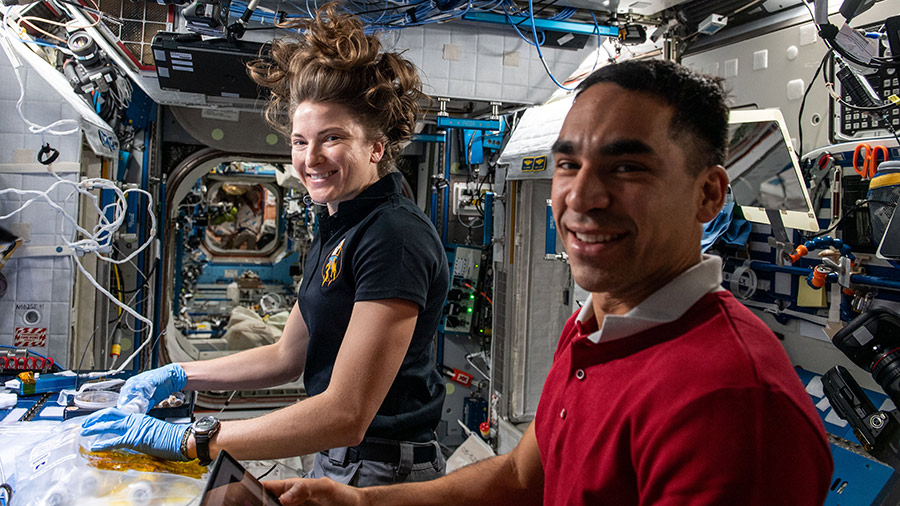Crew Unloads Cygnus and Begins New Research

A U.S. cargo craft is being unpacked today following its robotic capture and installation at the International Space Station early Monday morning. The Expedition 66 crew also spent Tuesday activating new research and conducting eye checks.
Three NASA astronauts, Mark Vande Hei, Thomas Marshburn, and Kayla Barron, along with ESA (European Space Agency) astronaut Matthias Maurer spent Monday unpacking research samples stowed in science freezers aboard the U.S. Cygnus space freighter. The quartet then loaded the frozen samples into research racks throughout the space station. Some of the new science samples delivered on Monday include skin cells and cancer cells being studied in the microgravity environment to improve human health on Earth and in space.
Marshburn set up the Microgravity Science Glovebox during the afternoon to begin looking at the skin cell samples. The new study getting underway today explores ways to diminish space-caused accelerated skin aging with benefits for astronauts and Earthlings.
Cygnus had launched from Virginia on Saturday as 12:40 p.m. EST loaded with 8,300 pounds of new science experiments, crew supplies, and station hardware. It arrived Monday morning when NASA Flight Engineer Raja Chari, backed up by Barron, commanded the Canadarm2 robotic arm to capture Cygnus at 4:44 a.m. Robotics controllers took over shortly afterward and guided Cygnus to the Unity module where it was installed just over two hours later.
Following a day’s worth of Cygnus cargo transfers on Tuesday, Vande Hei and Chari also participated in eye scans using standard medical imaging gear in the Harmony module. Commander Anton Shkaplerov and Flight Engineer Pyotr Dubrov kicked off the exams in the afternoon helping doctors understand how living in space affects the human eye and retina.
Shkaplerov first spent the morning on an exercise study exploring ways to maximize the effectiveness of working out in weightlessness. Dubrov worked on communications gear and ventilation hardware throughout the station’s Russian segment.
from Space Station https://ift.tt/qXpk5BL
Comments
Post a Comment